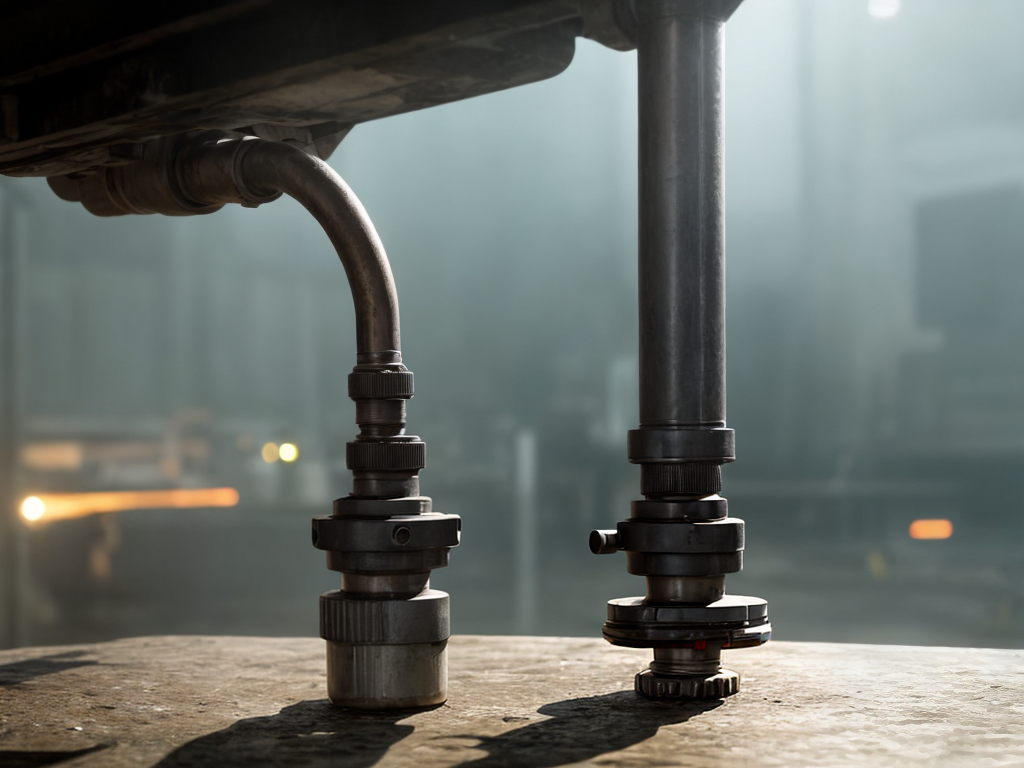
As I stand amidst the vast machinery, the rhythmic hum of valves echoes through the air, reminding me of their pivotal role in maintaining operational efficiency. Preventive maintenance is the key to ensuring these industrial valves continue to function seamlessly and avoid costly breakdowns. In this discussion, I will delve into the components of a comprehensive maintenance schedule, highlighting best practices for inspection, cleaning, lubrication, and tips to extend the lifespan of these critical components. By following these guidelines, you will be equipped with the knowledge to keep your valves operating smoothly and your operations running like a well-oiled machine.
Importance of Preventive Maintenance
Preventive maintenance plays a crucial role in ensuring the optimal performance and longevity of industrial valves. Regular maintenance offers numerous benefits that contribute to the smooth functioning of these valves, preventing costly downtime and potential hazards. By adhering to a rigorous maintenance schedule, companies can maximize the efficiency and reliability of their valve systems.
One of the primary benefits of regular maintenance is the prevention of unexpected breakdowns. By conducting routine inspections, cleaning, and lubrication, potential issues can be detected and resolved before they escalate into major problems. This proactive approach helps to avoid costly repairs and ensures that the valves continue to operate at peak performance.
Another advantage of regular maintenance is the extension of valve lifespan. With proper care, valves can last significantly longer, saving companies the expense of frequent replacements. By regularly checking for wear and tear, corrosion, and leaks, maintenance technicians can address these issues promptly, prolonging the life of the valves.
However, despite the clear benefits, there are common maintenance mistakes that should be avoided. One such mistake is neglecting regular inspections and maintenance altogether. Overlooking these crucial tasks can lead to valve malfunctions, decreased efficiency, and potential safety hazards. Another mistake is using incorrect or substandard replacement parts during maintenance. Using genuine parts and following manufacturer guidelines is crucial to ensure proper functioning and prevent further damage.
Components of a Maintenance Schedule
Regular maintenance is essential for ensuring the optimal performance and longevity of industrial valves, and a comprehensive maintenance schedule includes several key components. One of the most important aspects of a maintenance schedule is determining the frequency at which maintenance tasks should be performed. This is typically based on factors such as the type of valve, its usage, and the operating environment. By establishing a regular maintenance frequency, potential issues can be identified and addressed before they escalate into costly problems.
Another crucial component of a maintenance schedule is documentation. Proper documentation is essential for tracking maintenance activities and ensuring that all necessary tasks are completed on time. It also provides a record of the valve’s maintenance history, which can be useful for troubleshooting and future reference. Documentation requirements may include recording maintenance dates, tasks performed, any issues encountered, and any replacement parts used.
In addition to maintenance frequency and documentation requirements, a maintenance schedule should also include specific tasks to be performed during each maintenance interval. These tasks may include inspecting valves for signs of wear or damage, cleaning and lubricating valve components, testing valve functionality, and replacing worn or faulty parts. The schedule should outline the specific procedures and guidelines to be followed for each task, ensuring consistency and efficiency in maintenance operations.
Furthermore, it is important to establish a system for prioritizing maintenance tasks based on their urgency and potential impact on valve performance. This allows for efficient allocation of resources and ensures that critical maintenance tasks are not overlooked or delayed.
Best Practices for Valve Inspection
What are the key considerations for conducting effective valve inspections? When it comes to valve inspection, there are several best practices that can help ensure the process is effective and thorough. Here are three important considerations to keep in mind:
-
Valve maintenance checklist: Before starting the inspection, it is crucial to have a comprehensive checklist that outlines all the necessary steps and tasks to be performed. This checklist should include items such as checking for leaks, inspecting the valve body and internals, examining the seating surfaces, and testing the valve’s operation. Having a checklist helps ensure that no important steps are missed during the inspection process.
-
Proper training and expertise: Conducting valve inspections requires specialized knowledge and expertise. It is essential to have trained personnel who understand the different types of valves, their components, and the common issues that can arise. Proper training ensures that inspectors can accurately identify any potential problems and recommend appropriate solutions.
-
Addressing common valve inspection issues: Valve inspections often reveal common issues that can impact valve performance and reliability. These issues may include worn seals, damaged valve stems, corrosion, or improper installation. Inspectors should be knowledgeable about these common issues and be able to assess their severity. Addressing these issues promptly can prevent further damage and extend the lifespan of the valves.
Cleaning and Lubrication Procedures
For optimal valve performance and longevity, it is crucial to follow proper cleaning and lubrication procedures. Cleaning techniques play a vital role in removing dirt, debris, and contaminants that can compromise the valve’s functionality. One effective cleaning technique is mechanical cleaning, which involves using brushes, solvents, or compressed air to remove deposits. It is important to ensure that the cleaning method used does not damage the valve components or leave any residue behind.
When it comes to lubrication, selecting the right lubricant is essential. The lubricant chosen should be compatible with the valve material and the process fluid. It should also have good temperature stability and resistance to oxidation. Depending on the valve type and application, different lubricants may be required. For example, for valves operating in high-temperature environments, a high-temperature lubricant with excellent thermal stability should be used.
The lubrication procedure should involve applying the lubricant to the moving parts of the valve, such as stems, discs, and bearings. It is important to follow the manufacturer’s recommendations regarding the amount of lubricant to apply and the frequency of lubrication. Over-lubrication can cause excessive build-up and interfere with valve operation, while under-lubrication can lead to increased friction and premature wear.
Regular cleaning and lubrication are essential for maintaining the performance and longevity of industrial valves. By following proper cleaning techniques and selecting the right lubricant, valve operators can ensure smooth operation and minimize the risk of valve failures. It is important to establish a preventive maintenance schedule that includes regular cleaning and lubrication to prevent issues and extend the lifespan of industrial valves.
Tips for Extending Valve Lifespan
To extend the lifespan of industrial valves, it is crucial to implement proper maintenance practices. By following these valve maintenance techniques, you can prevent common valve problems and ensure the longevity of your valves:
-
Regular Inspection: Conduct routine inspections to identify any signs of wear, leaks, or corrosion. Check for loose fittings, damaged seals, or abnormal valve operation. This will help detect potential issues early on and prevent them from escalating into major problems.
-
Proper Lubrication: Lubrication is essential for smooth valve operation and to minimize friction and wear. Apply the appropriate lubricants recommended by the valve manufacturer to ensure optimal performance. Regularly check and replenish the lubricant levels to prevent dry operation, which can lead to valve damage.
-
Correct Installation and Operation: Ensure that valves are installed correctly, following the manufacturer’s guidelines. Improper installation can cause misalignment, stress on the valve components, and premature failure. Operate valves within their specified parameters, avoiding excessive pressures, temperatures, or flow rates that can strain the valve and compromise its performance.


